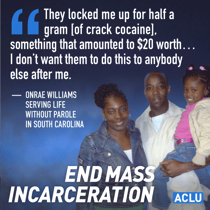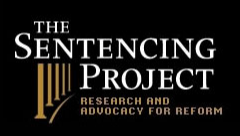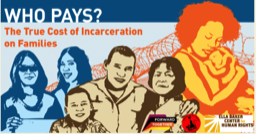
September 2015
For more than a year, the Ella Baker Center, Forward Together, Research Action Design, and 19 other organizations across the country collaborated on a research project documenting the hidden consequences of mass incarceration in the United States. Who Pays? The True Cost of Incarceration on Families proves that the costs of locking up millions of people in jail cells is much deeper than we think – when we lock up individuals we also break apart their families and communities. This new report reveals the overwhelming debt, mental and physical ailments and severed family bonds that are some of the costs families face. The situation is dire, but a better approach is possible according to Who Pays? which suggests critical and achievable family-centered reforms. Read the report now.
September 2015
Bureau of Justice Statistics, Prisoners In 2014
Presents final counts of prisoners under the jurisdiction of state and federal correctional authorities on December 31, 2014, collected by the National Prisoner Statistics program. This report includes the number of prison admissions, releases, noncitizen inmates, and inmates age 17 or younger in the custody of state or federal prisons. It presents prison capacity for each state and the Federal Bureau of Prisons (BOP), examines the use of private prisons by state and the BOP from 1999 to 2014, and describes the offense and demographic characteristics of yearend federal and state prison populations. Read more.
August, 2015
Federal Drug Sentencing Laws Bring High Cost and Low Return, a brief from the Pew Charitable Trusts reveals that more than 95,000 people in federal prison are serving time for drug-related offenses an increase. There were only 5,000 in 1980. Changes in drug laws and enforcement practices have played a key role in this growth and these policies have contributed to ballooning costs. The federal prison system now consumes more that $6.7 billion a year, or roughly 1 in 4 dollars spent by the U.S. Justice Department. Read the Overview here.
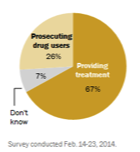
April, 2014
The public appears ready for a truce in the long-running war on drugs. A national survey by the Pew Research Center finds that 67% of Americans say that the government should focus more on providing treatment for those who use illegal drugs such as heroin and cocaine. Just 26% think the government’s focus should be on prosecuting users of such hard drugs. America’s New Drug Policy Landscape Two-Thirds Favor Treatment, Not Jail, for Use of Heroin, Cocaine. Read the report and download materials here.
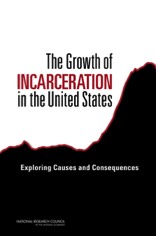
2014
The Growth of Incarceration in the United States: Exploring Causes and Consequences. After decades of stability from the 1920s to the early 1970s, the rate of imprisonment in the United States more than quadrupled during the last four decades. The U.S. penal population of 2.2 million adults is by far the largest in the world. Just under one-quarter of the world's prisoners are held in American prisons. The U.S. rate of incarceration, with nearly 1 out of every 100 adults in prison or jail, is 5 to 10 times higher than the rates in Western Europe and other democracies. The U.S. prison population is largely drawn from the most disadvantaged part of the nation's population: mostly men under age 40, disproportionately minority, and poorly educated. Prisoners often carry additional deficits of drug and alcohol addictions, mental and physical illnesses, and lack of work preparation or experience. The growth of incarceration in the United States during four decades has prompted numerous critiques and a growing body of scientific knowledge about what prompted the rise and what its consequences have been for the people imprisoned, their families and communities, and for U.S. society. Read and full description and download a free copy online.
Authors; Jeremy Travis, Bruce Western, and Steve Redburn, Editors; Committee on Causes and Consequences of High Rates of Incarceration; Committee on Law and Justice; Division of Behavioral and Social Sciences and Education; National Research Council)
